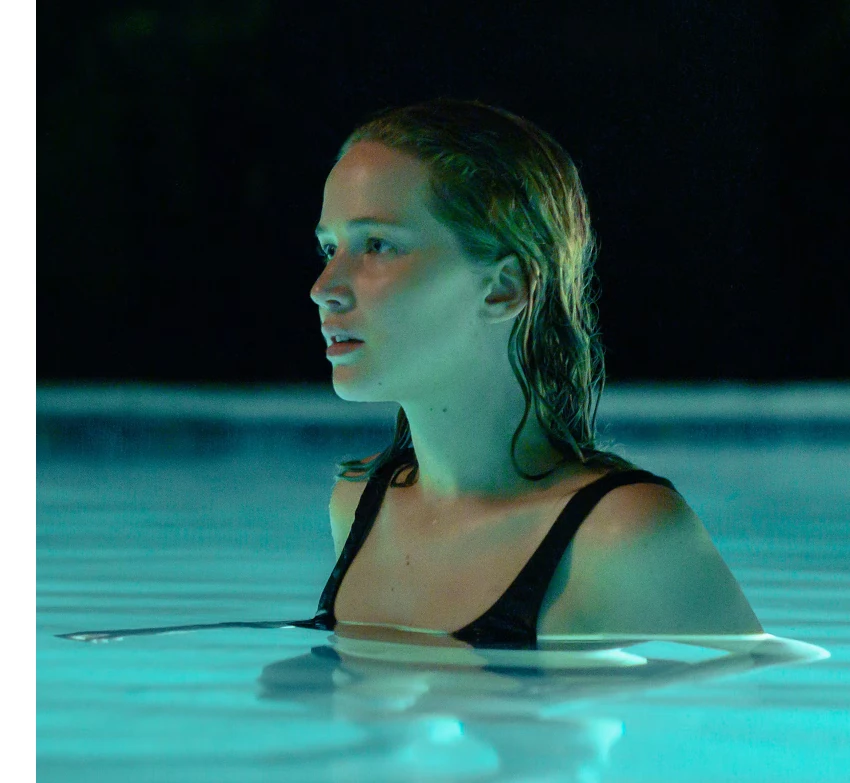By Melanie Waldman
In Causeway, Oscar-winning actor Jennifer Lawrence shows us a stripped back look at a soldier’s return to civilian life after suffering a traumatic brain injury in Afghanistan. In its best moments, the film captures profound truths about adapting to life after trauma—the way it shapes us, jerks us to the core, and leaves our futures unknown and undefined.
In one scene, Lawrence’s character, a veteran named Lynsey, is sharing a blunt with an auto mechanic named James (played by Brian Tyree Henry). When James reveals that he’s a trauma survivor, too, and that he wears a prosthetic leg, Lynsey answers: “I saw it in the way you walk. Did you serve?” His one-word response—“No”—was delivered with such perfection that it made me cackle. I felt so seen.
Through his facial expression and that single word of dialogue, Henry embodies the frustration and weariness that come from constantly dealing with people’s lazy assumptions about disability. Like most amputees, I’m routinely thanked by strangers for my service, even though I didn’t serve. It give me a lift to see a mainstream movie capture that dynamic so authentically—and stick the landing.
There are some light spoilers ahead. With that in mind, let’s dive right in.

Praiseworthy Takeaways
Lawrence shines in a new light of stunningly gorgeous vulnerability. She brings great thought to her portrayal of Lynsey, a major shift from the badass stoicism she made famous in her role of Katniss Everdeen (aka “The Girl on Fire”) in the Hunger Games movies. Here, Lawrence portrays trauma recovery as an internalized experience, not an external one. Making real life adaptations in the real world, especially after experiencing severe trauma is a very raw and real emotional journey. Lynsey has to process everything—she has to filter her experience in ways that are specific to trauma and disability.
Because Causeway portrays a young woman who became disabled at around the same age I did, I found it relatable on many levels. Much like Lawrence’s character, I have felt underlying power and ambition that’s just at the point of taking off. For some of us, it takes a great shaking up at our physical foundations in order for that power to be unleashed.
When Lynsey meets James about a quarter of the way through the film, he vaguely explains that he was once engaged and then lost his leg in a car accident. Just like Ansel Elkhart in The Fault in Our Stars, James lifts his pants leg to reveal his prosthesis and communicate to the audience: “Hi! I’m an amputee!”
He eventually gives enough detail to explain both the film’s title and the source of his amputation: James lost his leg in a car accident on the Lake Pontchartrain Causeway. Thus ends the discussion of his traumatic limb loss for the day. Their conversation fades as they silently share a rolled blunt and a six-pack of beer on a graffiti-stained metal bench in the center of an empty basketball court.
Henry and Lawrence show the importance of getting through trauma together, with a family, community, or support system that may appear strange or atypical to outsiders. Sometimes those seemingly “odd” factors just happen to make perfect sense in making things feel more like home. As James eloquently puts it, “I got enough people feeling bad for me.” He yearns for true connection rather than sympathy.
Not-so-praiseworthy Takeaways
Even before watching the film, I had to acknowledge the elephant in the room (or on the causeway): the inauthentic casting of a non-disabled actor in a disabled role. So often we see films choose to “crip up” Hollywood actors. But why? There could be many reasons, including ticket sales, profitability, and the on-screen chemistry between two major stars. But where does that leave moviegoers with disabilities (who account for roughly one in four adults in the potential audience)? I and other disabled advocates in entertainment have been imploring Hollywood to examine this question, to little effect.
Causeway left me wanting more of some of its minor characters. I wanted more of the caregiver who helps Lynsey reintegrate into civilian life. I wanted more of the VA doctor who challenges Lynsey’s insistence on returning to active military duty. I wanted more of Lynsey’s brother, an incarcerated drug addict who only appears in one scene. The character, who is hearing impaired, is played by an authentically cast actor, Russell Harvard (Switched at Birth), but the thinness of his specific role almost made it feel as though they just tacked it on to earn authenticity points, an afterthought at best.
Another scene, where James removes his device and peels the liner off his CGI-generated residual limb to join Lynsey in a swim, gave me bad flashbacks to Lieutenant Dan’s legs reveal in Forrest Gump. With the understanding that being an actor is to be a storyteller, that part of the representation of disability in Causeway felt a bit cringeworthy and ultimately fell flat for me. I let the rest of the film end without much of my interest, background noise at best.
After triumphs like CODA and The Peanut Butter Falcon, why must Hollywood casting offices ignore disabled actors? And why so blatantly? Inauthentic casting is a trend that remains unswayed by disability rights activists in the entertainment business. Lawrence’s performance saves Causeway from blatantly tokenizing trauma and disability. But in the end it falls into some of the same cliches and tropes the film seeks to transcend.
I’m definitely interested to hear what disabled and allied audience members think of this film.
Melanie Waldman is an actor, filmmaker, and model. She has won multiple filmmaking awards in the Easterseals Disability Film Challenge. Follow her online at melanieriverawaldman.com or on Instagram at whereswaldman.